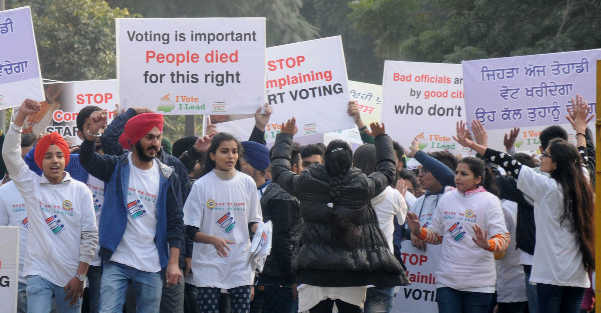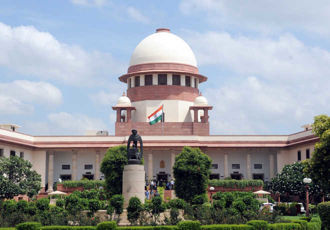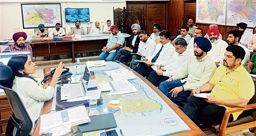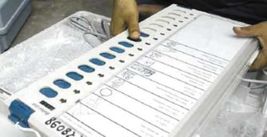
Yogendra Yadav
WILL Punjab get the change that it has long waited and prepared for? This is the big question that we should be asking in the forthcoming Assembly elections. This is no ordinary election. Punjabis within and outside Punjab have looked forward to this election for nearly three years, if not more. They have pinned big hopes on this election, not just hopes of change in government, but also change in the nature of politics itself. As we wait till the February 4 for Punjabis to answer this question, and another excruciating month for the answer to be revealed, the picture is beginning to reveal itself.
With Navjot Singh Sidhu finally entering the Congress and all lists of candidates being released, we do not have many imponderables left in the field. This was preceded by the release of two polls, one by CSDS-Lokniti for ABP News and the other by Axis for Aak Tak/India Today TV. Both these are well-known agencies and credible news organisations. But then how does one make sense of the two very different pictures that emerge from these two polls?
While both polls agree that it is a three-horse race, there is a sharp difference in how the three are placed: the CSDS puts the ruling Akali Dal-BJP coalition at the top, while Axis puts them at the bottom. While both polls say that the Congress is clearly ahead of the AAP, CSDS says the lead is 10 percentage points, while the Axis poll puts it at six points. Both polls project a hung Assembly. The CSDS poll expected the ruling party to secure a near majority of seats, between 50 to 58, followed by the Congress with 41-49 and the AAP way behind at 12-18. The Axis poll puts the Congress just below majority at 49-55, followed closely by the AAP at 42-46 and the Akali Dal-BJP a poor third with 17-21 seats. (See accompanying table).
The difference is irreconcilable, or so it would seem. But actually, the two polls are doing two different things and are therefore compatible with each other. The CSDS did plain reporting while Axis offered an interpretation of data. Specifically, the Axis-India Today poll used the December data to project the likely outcome in February while CSDS-ABP merely reported the voting intention as it stood in the month of December.
I guess both surveys got more or less the same data from their fieldwork. When they asked their respondents about who they would vote for, if elections are held tomorrow, the answers were something like this: Akali Dal-BJP: 36-40 per cent, Congress: 33-37 per cent, AAP: 20-24 per cent and the rest about 5 per cent. The CSDS made one routine adjustment and revised ‘others’ to 14 per cent. Everyone else was shrunk proportionately and they presented this data to the public. These figures may contain a lot of over-reporting (by respondents, not by CSDS) for the Akali Dal-BJP, partly due to fear, and partly, the usual bias for the incumbent.
The Axis poll appears to have made an additional adjustment for ‘recall’ of the respondents. They adjusted the raw data by how their respondents’ reporting of who they voted for in 2014 matched with the actual outcome. Presumably, they found massive over-reporting for the Akali Dal and thus something like 38 per cent for the Akali-BJP combine was thus reduced to 24 per cent and so on. Now, this is not cheating; this is legitimate data adjustment. But the reader needs to know about it.
Besides their differing projections, both polls offer a good deal of valuable information on the public mood in Punjab. The CSDS team should be complimented for their transparency and for putting most of the data in the public domain. (Full disclosure: I was on CSDS faculty for two decades, but have resigned now and have no connection with their survey team). Both of them agree that the people of Punjab are in no mood to give the ruling alliance a third chance — according to CSDS, the division is 5:2 against another chance to the Akali Dal. Both polls put Capt Amarinder Singh as the front-runner in the CM’s race. The CSDS poll also gives a glimpse of why people are unhappy with the ruling coalition: their unhappiness is not so much on account of lack of development as it is about lack of employment, rule of law and prevalence of corruption.
At this stage, it is safe to draw the following conclusions: One, there is a massive anti-incumbency wave against the Akali Dal-BJP. They are headed for their electoral Waterloo. Two, the AAP, which appeared as the front-runner against the ruling coalition about six months ago, has slipped from that position. The CSDS poll says that its support is concentrated in the central districts of Malwa, not in eastern and western Malwa, nor in Majha and Doaba. Three, outside these districts, the Congress is poised as the front-runner. According to the Axis poll, in the last few months, the Congress has increased its lead over the AAP. Navjot Sidhu’s entry could give the Congress the final push it needed. Four, while the rebellion of Dr Dharamvir Gandhi against the AAP leadership and the exit of Sucha Singh Chhotepur from the party have seriously dented the image of the party and its poll prospects, they do not seem to be making it a four-cornered contest. We should be careful though as opinion polls tend to under-estimate new parties.
The fieldwork for both these polls was done between the second and third weeks of December. So, it seems Punjab will have a political change. The question is: will it have the change that it had looked forward to? Sadly, no matter what the final outcome, the answer to this question is negative. None of the big issues Punjab faces today have been addressed in this campaign. Punjab has seen some reckless, populist promises, but the blueprint on any of these critical areas — unemployment, indebtedness, agrarian crisis, exodus of industries, and drug menace, to name a few. While the problem of drugs has been talked about, there is not even a half-hearted attempt to work out a solution. There is a new entrant in this election, but it has ended up recycling the same set of discredited political actors, and has relayed the standard script so familiar to Punjab. Those who want a real change in Punjab may have to look beyond, and work towards politics beyond this election.


























